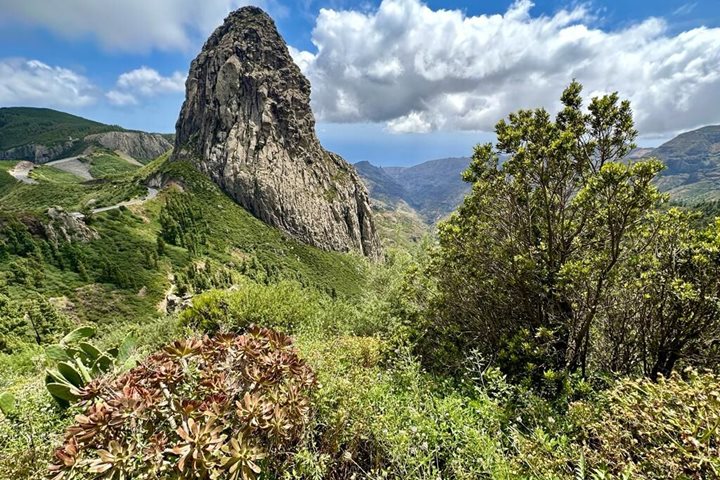By first light, many of us were on deck as we sailed in the proximity of a sea mount. The expectancy was palpable. The skies were filled with dust from the Sahara, and this became more evident as the sun rose. The dust surrounding us is part of the harmattan winds, which blow from November to March each year and can carry the dust as far as Florida, the Caribbean Islands, and the Amazon.
We were rewarded, of course, with good numbers of seabirds and two fleeting views of a small group of cetaceans, in all likelihood a species of beaked whale. We saw the dorsal fins twice and then all trace of these marine mammals was lost.
There were two birds sighted that were unexpected: a species of dove and a small passerine that was greenish in color. The dove turned out to be a European turtle dove and was seen by many of us at different times throughout the day. These birds must have been blown out to sea and happened to come across the ship. The little greenish bird was never seen again, maybe ending up as a snack for the jaegers that were seen during the early morning.
Like our other sea days, the day was filled with a wide range of activities that included galley tours, the final round of the GeoBee, navigation workshops, fun facts about the Atlantic, and two presentations. The first presentation was given by Carlos Garrandés Megía on, “Building a Whaleboat: Approaching Practice through Anticipation.” The second presentation, “The Transatlantic Slave Trade,” was masterfully presented by Andrew Evans. How important it is to be reminded, lest we forget, the horror of this atrocity.
During the afternoon, persevering nature observers were rewarded with numerous seabird sightings as well as flying fish, pilot whales, and a couple of fleeting looks at sperm whales.
We anticipate being on land once again tomorrow: Santiago Island in the Cape Verde archipelago.









